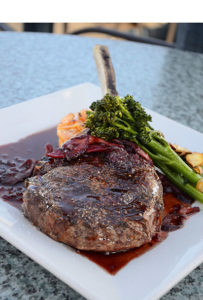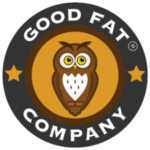A hyper-palatable food is one where the synergy between components of the food — such as fat, sodium (salt), sugar, and carbohydrates — makes it tastier than it would otherwise be.
Hyper-palatable foods can activate our brain reward neurocircuitry, which can create a highly rewarding experience that can make these foods difficult to stop eating, even when we feel full.
Have you ever started eating Doritos and couldn’t stop?? Think about candy bars, salty chip snacks, and cookies, and how pleasurable it is to eat them and how fast one can accrue lots of calories by eating them!
In this book called The Dorito Effect, Mark Schatzker, the author, has done extensive research on hyper palatability and has written this book to explain the missing piece of the food puzzle: flavor. Drawing on advances ranging from the brain science of food addiction to how plants communicate with insects, The Dorito Effect shows how we have interfered with a highly sophisticated chemical language that evolved to guide our nutrition. Evolution did not program us to get fat—we’ve simply tricked ourselves into craving the wrong foods.

Jello and Yogurt are Hyper Palatable
“Flavor technology has gotten incredibly potent with their chemicals and it’s not with just potato chips and soda,” he states, “we’re putting flavorings in soymilk, in yogurt, and frozen pizzas. If you look at the ingredients for any of the fast-food restaurants that care to share them…You see artificial and natural flavorings everywhere. Americans consume about 600 million pounds per year.” He states in his interview with Robb Wolf … “this stuff does measure in parts per billion. So, 600 million pounds is just a staggering amount.”
Basically, the food industry has well-established food formulas based on combinations of fat, sugar, sodium, and carbohydrates that are designed to maximize palatability and consumption.
Check out our food bars that are not chemically manipulated to trick your taste buds… LINK
In a Medscape article called, ‘Hyperpalatable’ Defined as Foods Driving the Obesity Epidemic” Researchers defined hyper-palatable foods as those that contain:
- Fat and sodium (> 25% kcal from fat, ≥ 0.30% sodium by weight), for example, bacon and pizza; or
- Fat and simple sugars (> 20% kcal from fat, > 20% kcal from sugar), for example, cake and ice cream; or
- Carbohydrates and sodium (> 40% kcal from carbohydrates, ≥ 0.20% sodium by weight), for example, bread and chips.
They determined that 4795 of 7757 foods (62%) in the US Department of Agriculture’s Food and Nutrient Database for Dietary Studies (FNDDS), which is representative of the US food system, met these criteria.
A good solution to replace these hyper-palatable foods is Protein.
Getting sufficient protein in your diet – both in overall grams and in proper doses throughout the eating day – can make a tremendous difference in your level of food cravings.
Why Protein is Important:
- It makes you feel full. Protein takes longer to digest, which means feeling fuller longer and enjoying a more stable blood sugar, and hence reduced cravings.
- Protein is an important component of every cell in the body. Your body uses protein to build and repair tissues. You also use protein to make enzymes, hormones, and other body chemicals. Protein is an important building block of bones, muscles, cartilage, skin, and blood.
- In conjunction with resistance training, getting sufficient protein in your diet will give your body the building blocks to prioritize building (and keeping) lean muscle, which translates into a stronger, fitter body with a higher resting metabolism.
“Michael Pollan [a US author who has written about the food industry] had a great message when he said, ‘Don’t eat anything your great grandmother wouldn’t recognize as food.


